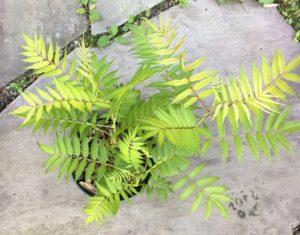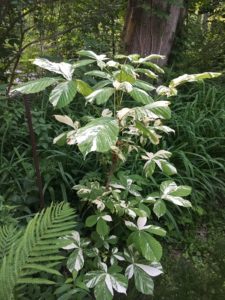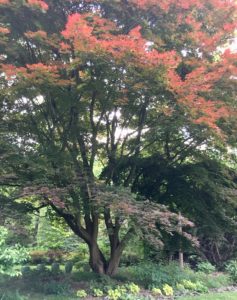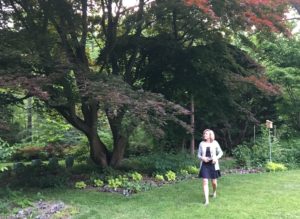Hello fellow readers,
Last year I missed the opportunity for annuals, then scrambled to doll up my empty pots with perennials late in the season. Overwintered in the garage, I loved when their little faces emerged. This year I made time for the annual trek in time to find my favored and unusual Mona Lavender (Plectranthus) with her fuzzy deep green foliage and deep purple under-leaf plus lavender flower spikes all season long. She thrives in part shade.
But truth be told, I mostly traveled to the old-time nursery as I adore the seasoned gardener who tallies the orders. Garbed in a denim skirt, layers of long sleeves for sun protection, and a scarf holding her hat embracing her face like a holiday wreath, Genevieve reminds me of my Mom when she worked at a nursery way back when.
Extraordinary Gardeners
That same afternoon was a reunion picnic for the retired Springfest Garden Show organizers hosted by Ken Druse, our keynote speaker and award-winning author and photographer, and Louis Bauer, Director of Horticulture at Wave Hill (Bronx NY). Both are garden legends to those who’ve had the privilege to rub shoulders and share garden stories.
With gracious hospitality, they toured us through their gardens chockfull of unique species, many rare, like Variegated Horsechestnut (Aesculus hippocastanum’ Variegata,’ Zone 4) with striking streaks of white and green variegation on ten-inch leaves grouped like five fingers.
Extraordinary Plants
Along a grassy path was a swath of Ural False Spiraea. Ken warned, as charming as the reddish-tinged new leaves are, “Sorbus sorbifolia ‘Sem’ runs!” The leaves turn deep green in summer and flowers white in late June through July. According to Michael Dirr’s Manual of Woody Landscape Plants, indeed False Spiraea needs “considerable room.” It is ideal for covering an embankment, which is what I have planned for the starter plant Ken gave me dug up from his lawn.
“It’s better to plant it where you have a chance of corralling it,” advised Ken. I’ll plant it on the edge of a shady woodland as new shoots will die in the shade.
Of all the extraordinary plants, an old Japanese maple (Acer palmatum) captured my admiration. It survived sitting in wet feet for days after Hurricane Sandy. It looks like a sculpture with maroon leaves tinged red, vase-shaped, with smooth grey bark.
“I counted the rings in one of the branches,” shared Louis. “There were ninety. So, the tree is likely a hundred and fifty or more.” A centerpiece of longevity, a glorious garden legend that felt holy to walk beneath.
Garden Dilemmas? AskMaryStone@gmail.com (and on your favorite Podcast App.)
Link to a previous story you’ll enjoy: Two best Gardeners of the Garden State
Column Updated 3/13/22








